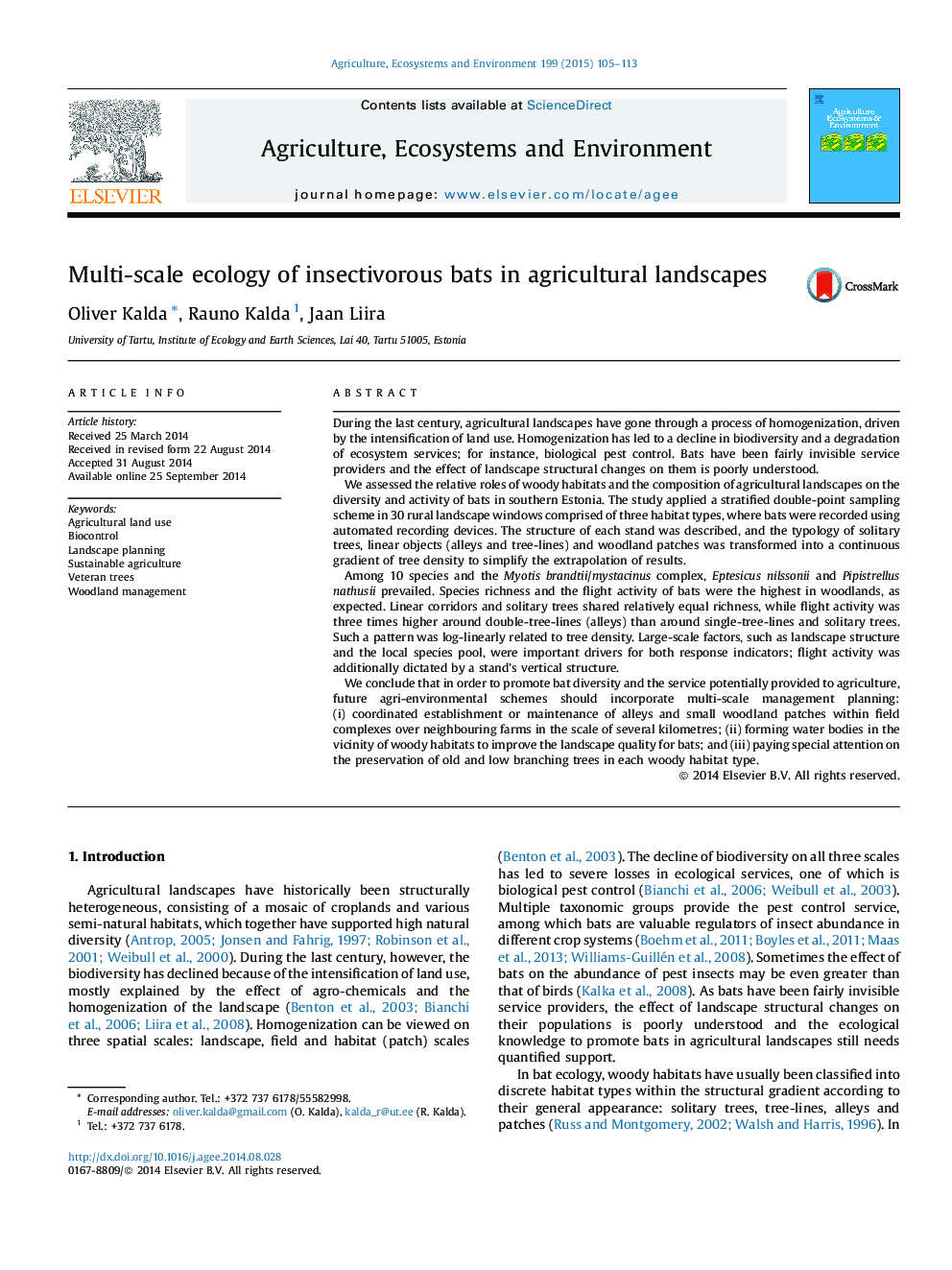| کد مقاله | کد نشریه | سال انتشار | مقاله انگلیسی | نسخه تمام متن |
|---|---|---|---|---|
| 2413849 | 1552053 | 2015 | 9 صفحه PDF | دانلود رایگان |
• A simplified agricultural landscapes does not support bats, as biocontrol agents.
• The role of habitat properties and landscape structure has been evaluated.
• Ranking for bat species richness: forest and park > corridors = solitary trees.
• Ranking for bat activity: forest and park > alleys > tree lines = solitary trees.
• Biological control can be supported only with multi-scale planning.
During the last century, agricultural landscapes have gone through a process of homogenization, driven by the intensification of land use. Homogenization has led to a decline in biodiversity and a degradation of ecosystem services; for instance, biological pest control. Bats have been fairly invisible service providers and the effect of landscape structural changes on them is poorly understood.We assessed the relative roles of woody habitats and the composition of agricultural landscapes on the diversity and activity of bats in southern Estonia. The study applied a stratified double-point sampling scheme in 30 rural landscape windows comprised of three habitat types, where bats were recorded using automated recording devices. The structure of each stand was described, and the typology of solitary trees, linear objects (alleys and tree-lines) and woodland patches was transformed into a continuous gradient of tree density to simplify the extrapolation of results.Among 10 species and the Myotis brandtii/mystacinus complex, Eptesicus nilssonii and Pipistrellus nathusii prevailed. Species richness and the flight activity of bats were the highest in woodlands, as expected. Linear corridors and solitary trees shared relatively equal richness, while flight activity was three times higher around double-tree-lines (alleys) than around single-tree-lines and solitary trees. Such a pattern was log-linearly related to tree density. Large-scale factors, such as landscape structure and the local species pool, were important drivers for both response indicators; flight activity was additionally dictated by a stand’s vertical structure.We conclude that in order to promote bat diversity and the service potentially provided to agriculture, future agri-environmental schemes should incorporate multi-scale management planning: (i) coordinated establishment or maintenance of alleys and small woodland patches within field complexes over neighbouring farms in the scale of several kilometres; (ii) forming water bodies in the vicinity of woody habitats to improve the landscape quality for bats; and (iii) paying special attention on the preservation of old and low branching trees in each woody habitat type.
Journal: Agriculture, Ecosystems & Environment - Volume 199, 1 January 2015, Pages 105–113
